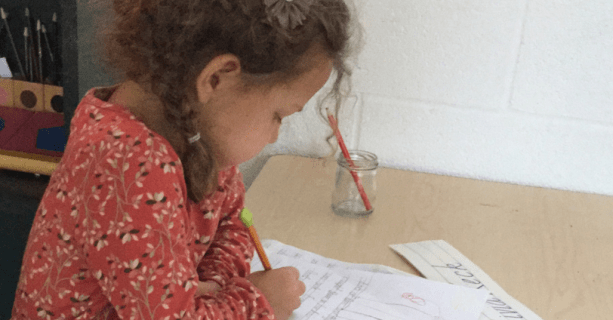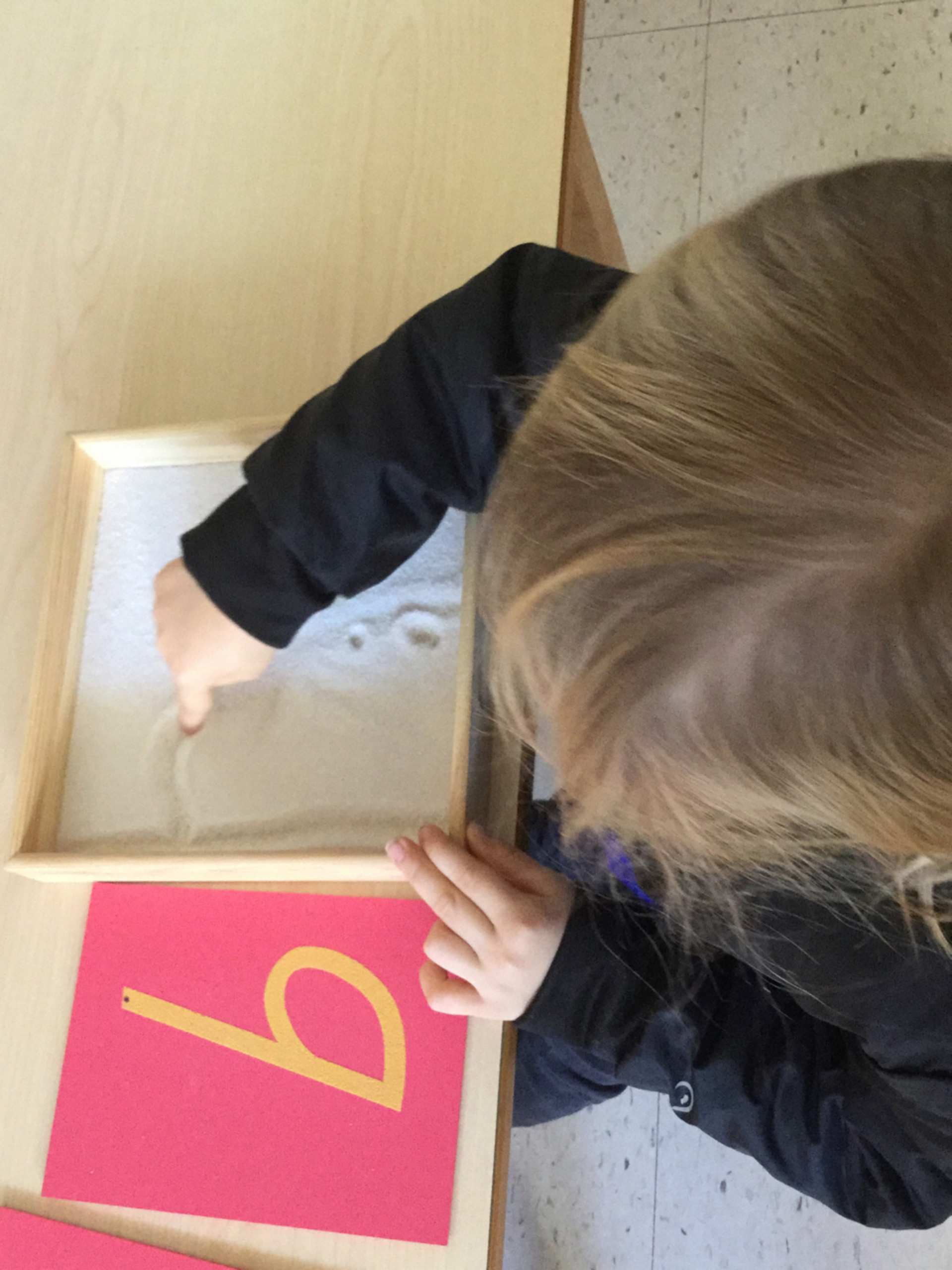The Montessori curriculum naturally supports the development of the whole child. This means that a child’s needs for intellectual, social, and emotional development are all equally important, and attended to with equal energy. Many kindergarten and pre-kindergarten classrooms are heavily weighted to take care of a child’s academic development in order to prepare them for testing that takes place in the elementary grades. In a Montessori classroom, however, the teachers trust that a child will choose the work that they need to develop specific skills at the right time, which means that we honor equally the social and emotional work children do in the early childhood classroom.
There always comes a point in children’s experience in the early childhood classroom where the child seeks to develop their writing abilities. There is much that we can do to support this development – not only the physical development of the hand muscles to use a pencil and write words, but also the social and emotional development of writing as a tool for communication and self-expression. One of the most important things we want children to take with them as they move from an early childhood classroom to elementary is a confidence and familiarity with forming letters consistently, so that once a child is ready to express themselves with writing, the motoric processes (the use of the muscles and the coordinated movements needed to write letters) will not hinder their self-expression in any way. We support this development in a few different ways.
Preparation of the hand:
While children are practicing using pencils to create art and geometric forms by using metal insets, we also provide children with instruments to manipulate that support strengthening the pincer grasp. Children are also encouraged to create beautiful maps of the continents, which support these skills, as well as providing the child with a big, beautiful map of our world. Children love this work, and as the work progresses with the children, we can also label the countries, giving more meaningful experience in writing.
How parents can support this development:
Encourage your children to draw, paint, and use Play-Doh. Playing with and manipulating small toys like Legos and other small objects also supports fine motor development.
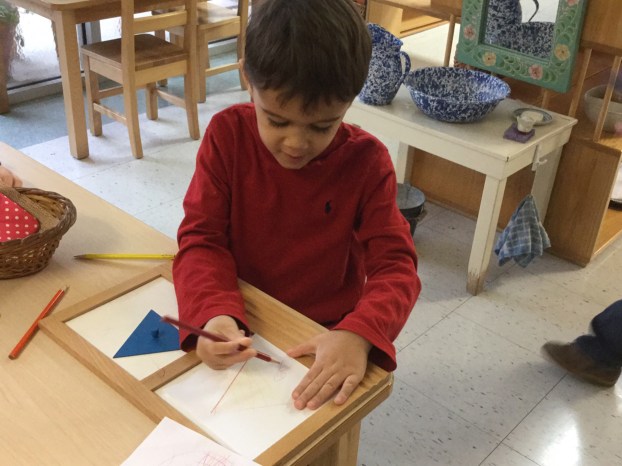
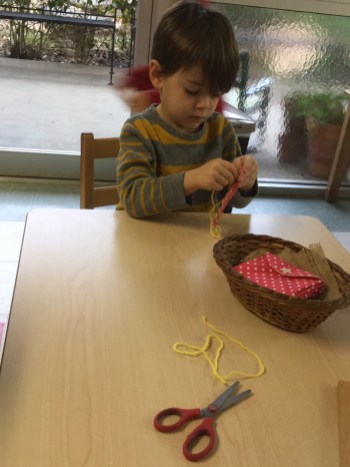
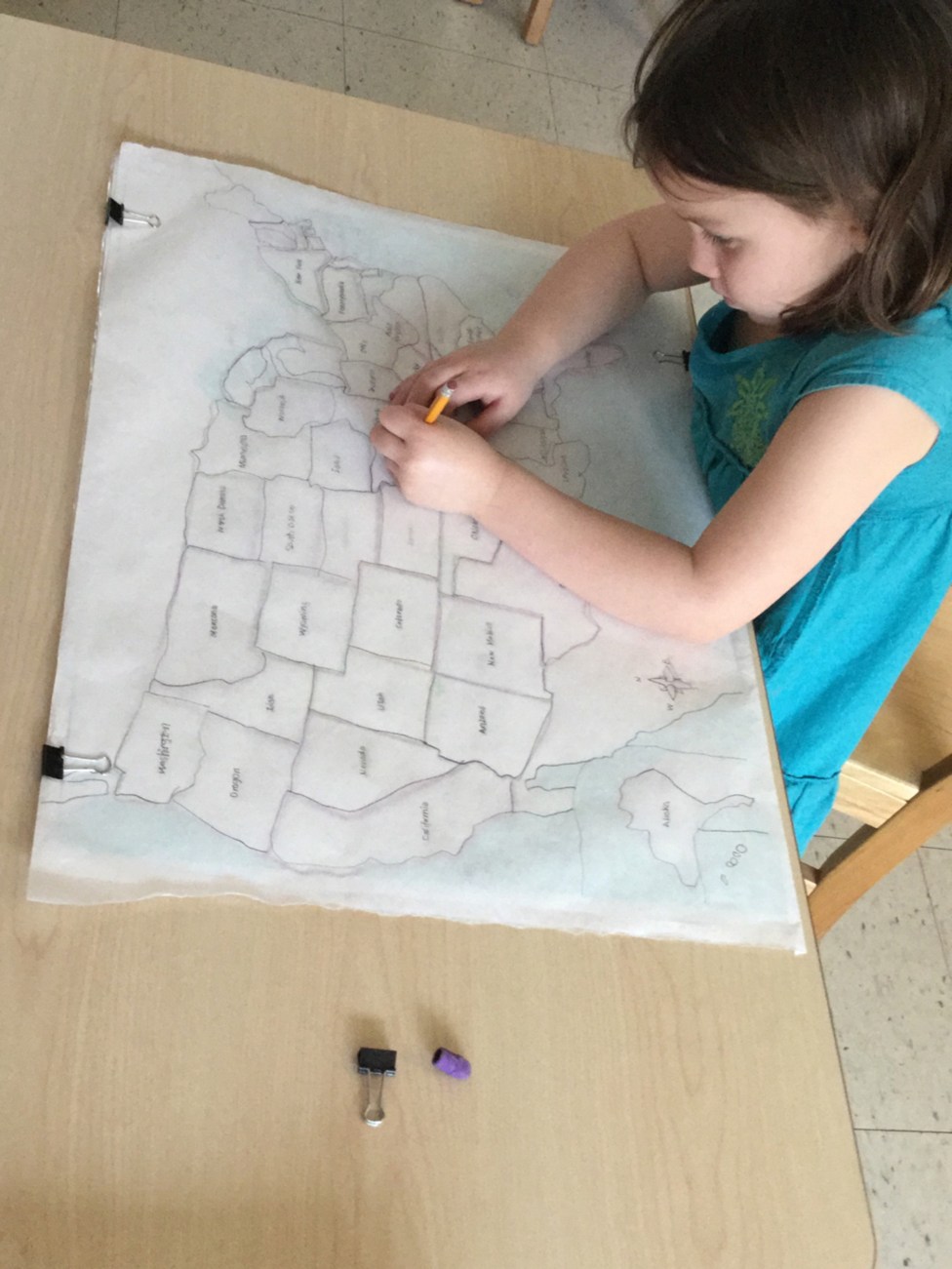
Forming the letters:
When children begin working with the sandpaper letters, we encourage them to form the letters consistently each time, tracing the letters following the same pattern each time they use the work. This stores the image of the letter in the muscle memory, providing an internal image of the letter. These internal images also improve the child’s recognition of each letter, which is turn supports reading development, and also encourages smooth and easy writing once the child is ready to begin writing words. The shapes and hand motions are familiar to them and prior experience in forming letters consistently means that children won’t need to stop the flow of their thoughts to consider how to make a “d” instead of a “b”, or try to remember how to form a lower case “a” instead of a capital “A”. Encouraging consistent letter formation while children are young is one of the best things we can do at this age to encourage a love of writing as children get older.
How parents can support this development:
If children are not yet able to consistently form letters properly, offer to write letters for your child to trace over. You can lightly write their name, or a story they want to write, and invite them to trace over the letters you’ve written.
Writing before reading:
Children in the Montessori classroom are led to writing works before reading materials. We want for each child to have the opportunity to experience writing and creating words from their component sounds before we ask them to read the words. Both processes are important of course, but writing lays the foundation for reading. Through writing, children have the opportunity to communicate their own ideas, which supports their understanding that reading is one way we can receive the ideas of others. Furthermore, through writing, children continue to develop the awareness of the component sounds in words, supporting a smooth transition into reading.
How parents can support this development:
Though the development of reading is highly anticipated, and very exciting, encourage the writing stage as long as possible, and refrain from asking a child to read something they’ve written before they try to do it themselves.

